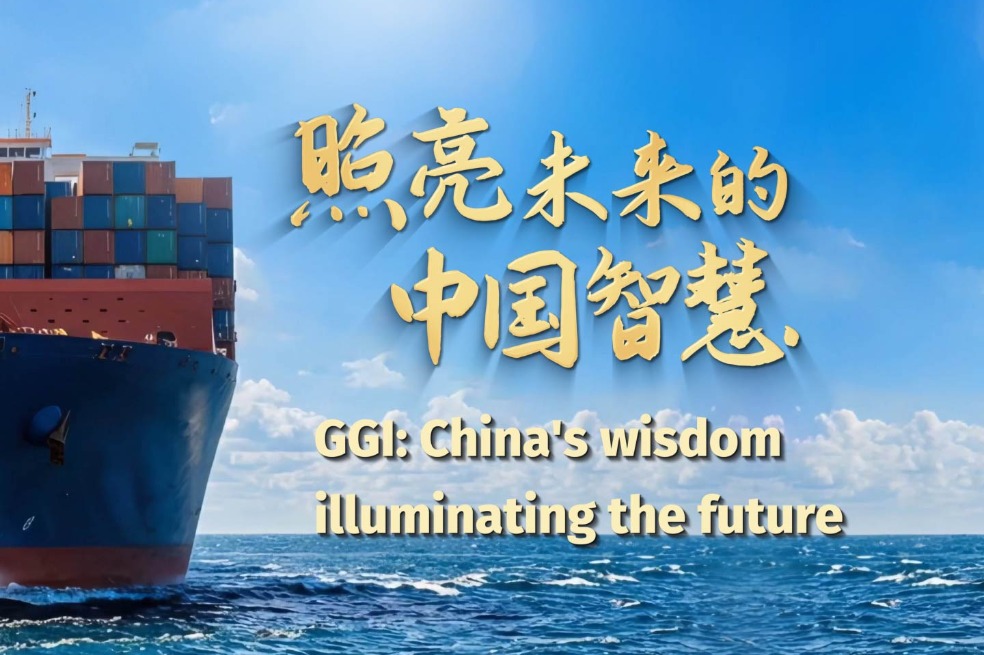Powering the future, today


Editor's note: The world has undergone many changes and shocks in recent years. Enhanced dialogue between scholars from China and overseas is needed to build mutual understanding on many problems the world faces. For this purpose, the China Watch Institute of China Daily and the National Institute for Global Strategy, Chinese Academy of Social Sciences, jointly present this special column: The Global Strategy Dialogue, in which experts from China and abroad will offer insightful views, analysis and fresh perspectives on long-term strategic issues of global importance.
Chinese NEV leadership is being attacked by the US, the legacy automobile manufacturer and biggest supplier and consumer of oil
China is the global leader in the design and manufacture of new energy vehicles, including electric vehicles. In the past four years, Chinese NEV manufacturers have taken the world by storm. Production output has increased from 350,000 in 2020 to 9.6 million in 2023. Previously unfamiliar brands outside China, such as BYD, are rapidly becoming global marques. The move to EVs is seen as being integral to the global process of decarbonizing economies and meeting the common objectives of nations as hammered out in the Paris Climate Agreement on climate change.
Given this, China's capacity and ability to deliver EVs at relatively low-cost should be welcomed. Yet, in recent months, the political elites in the United States and Europe have bemoaned what they have dubbed China's "overcapacity".They have badgered China about the low cost of its NEV exports, and have threatened bans and prohibitive tariffs.
There are plenty of reasons why these anxieties are misplaced. There are also good reasons why the opportunities of Chinese capacity and know-how can be harnessed for global benefit.
Chinese NEV manufacturers principally service the demands of a growing domestic market. Over the past four years, as China's NEV output has grown, between 75 percent and 85 percent of its output has been absorbed domestically. In 2023, for example, China's output was 9.6 million NEVs and the domestic market absorbed 8.3 million, with almost all of these being locally made models. This pattern reflects the overall trend in Chinese manufacturing over the past 30 years. In 1995, 11 percent of Chinese manufactured output was exported. This rose to a peak of 18 percent in 2004 before tapering back to current levels of around 13 percent.
Chinese NEV manufacturing is doubtless the global leader in both volume and price terms. Global demand remains strong. Indeed, recent data from the International Energy Agency shows that EV demand continues to expand. The IEA's Global EV Outlook 2024 Report observes: "Electric car sales in 2023 were 3.5 million higher than in 2022, a 35 percent year-on-year increase. This is more than six times higher than in 2018, just five years earlier." While demand remains concentrated in China, Europe and the US, demand for EVs in emerging markets is also growing strongly, albeit from a low base. This is particularly evident in Southeast Asia and Brazil.
The IEA notes that "an equitable and inclusive transition to electric mobility, both within countries and at the global level, hinges on the successful launch of affordable NEVs (including but not limited to electric cars)". This is why Chinese low-cost products are so important as a catalyst for ongoing demand growth, not only in the markets in which EVs already have a strong foothold but in other markets, too, where price barriers have been prohibitive historically.
The IEA estimates that by 2035, annual demand for NEVs will rise to over 55 million from current levels of around 14 million. Others have estimated that it could be as high as 60.4 million. Either way, current capacity is well short of what's required.
The world is confronting not an overcapacity crisis, but an emerging undercapacity crisis.
More manufacturing capacity is needed to meet the projected demand. Fortunately, Chinese manufacturers, and others, are already expanding their capacity across the globe through direct investments in new factories and joint ventures where appropriate.
Chinese enterprises are building or exploring opportunities to build new facilities in Thailand, Malaysia, Brazil, Vietnam, Hungary, Mexico, Spain and Italy. A globally distributed capacity makes sense when logistics costs are taken into account. Proximity to markets shortens fulfillment cycles, and enables whole-of-supply chain efficiencies to be realized.
Indeed, this is already one of the hallmarks of the Chinese NEV sector today. Chinese NEV manufacturers work on lean inventories but back this up with high productivity throughout. As such, their demand for working capital is less than traditional manufacturing. Presales with deposits provide certainty of demand over the forward horizon, with the additional benefit of an injection of working capital. This results in shorter turnover cycles through the process of design, build and fulfillment and, therefore, a higher system-wide efficiency of capital. With less capital locked up as working capital and inventory, enterprises, and their funders, are better placed to adjust to short-term market fluctuations.
Production automation is further driving down unit costs. Reportedly the Xiaomi SU7 production line delivers a new unit every 76 seconds. Preordered demand is such that the waiting time stretches for months. There's little idle inventory. This is not a symptom of "overcapacity".
A lack of comparable capability in the US is doubtless one of the reasons for elite anxiety in this sector. The fact that the legacy internal combustion engine sector is concentrated in Michigan, whose electoral college votes may be determinative in the November presidential election, strongly suggests that the recent rhetoric is designed more for domestic consumption than anything else. The US' motor vehicle sector was bailed out by the government in the aftermath of the 2008 financial crisis. It remains locked into old fuels and technologies. Votes are probably top of mind, too, when it's recognized that the US is the world's single largest producer and consumer of crude oil.
Developing countries will benefit from the availability of low-cost electrified transportation. Many nations will also benefit from Chinese investment in localized manufacturing capability. To complain about Chinese NEV prices is in effect to seek to put up barriers to developing nations accessing new affordable technologies.
Aside from seasonal domestic politicking, we can only hope that the political elite in the US aren't acting out of concern that developing countries will have a chance of leapfrogging legacy technologies and pursue a low-carbon development path.
The author is adjunct professor at Queensland University of Technology and a senior fellow at Taihe Institute.
The author contributed this article to China Watch, a think tank powered by China Daily.
The views do not necessarily reflect those of China Daily.


































